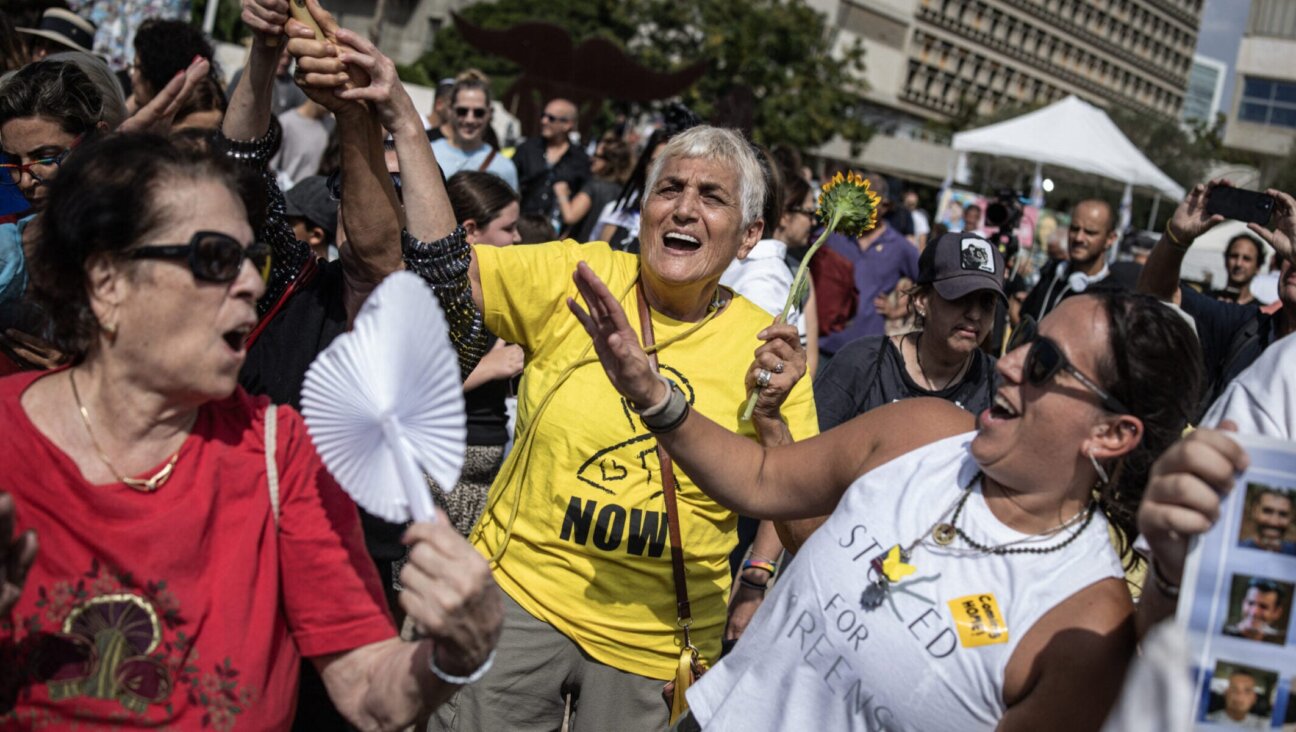Esther and the Khazars vs. the Nazis: a Purim Story

Graphic by Angelie Zaslavsky
Sign up for Forwarding the News, our essential morning briefing with trusted, nonpartisan news and analysis, curated by senior writer Benyamin Cohen.
Editor’s Note: Tim Duggan Books is running a giveaway contest for Sisterhood readers. Click here to enter to win a hamsa-shaped metal charm and a galley of the book.
When I first began writing my new novel, I wanted to do three things.
1) Give the Khazars — a tribe of Turkic warrior Jews who ruled the Pontic-Caspian Steppe in the Middle Ages — a chance in fiction to fight the Nazis.
2) Let them fight on mechanical horseback. Because mechanical horses are one of the best technological innovations that’s never happened, and if any culture would invent them, it would be steppe warriors like the Khazars.
And 3) Make the novel’s hero a Jewish girl named Esther.
Why Esther? Judaism offers many great women role models: Devorah and Ya’el, saving the Jewish people from Yabin. Ruth of good character, Channah and Sarah of strong faith. Rivkah and Leah! But Esther has always been my woman.
As a girl, I identified with her because we shared the difficulty of being Jewish in a non-Jewish world. In order to become Queen of Persia, after all, she had to hide her identity. You might not expect an American girl, growing up middle class in New Jersey in the 1980s, to experience anti-Semitism. But as one of three Jewish girls in a class of sixty at a private school, anti-Semitic micro-aggression was part of my daily life. A girl might come up to me in the hall to ask, “Hey, are you signed up for the ballroom dance classes to prepare for cotillion? Oh right, I forgot. Jews aren’t allowed in the country club. Never mind.” I felt singled out and threatened. But as I grew up, I learned to do as Queen Esther had done, to stand up as Jewish, loud and proud.
Queen Esther was also smart. King Ahasuerus chose her because of her beauty. But when Haman’s evil plot came to light, she used her cunning and intelligence, the strength of her words, to convince Ahasuerus of what was right.
In doing so, Esther showed her social conscience. As the Queen of Persia, she could easily have begged for a one-woman exception to Haman’s decree, and saved only herself. But she didn’t do that. When Mordechai told Esther of Haman’s plot to kill the Jews, she realized that many people’s fates rested on her shoulders. She put her own life at risk to take responsibility for everyone she could—a kind of service that Jewish women have taken on (sometimes in Esther’s Hebrew name, Hadassah) ever since.
Golda Meir led a nation; my grandmother, Minna Grodin, organized her local March of Dimes; many of my friends protest and organize against injustice, volunteer in the schools and their synagogues, and help feed the hungry. In different ways, all of these activities mean following in Queen Esther’s footsteps.
There’s one last reason why Esther is my hero, and why I wanted to name my main character after her: my mom. Like many American women born in the 1940s, she was saddled with a clunky English name, Enid. “Enid” made her sound like a schlubby librarian. But her Hebrew name, Esther, better suited her character. Like Queen Esther, my mom was both beautiful and whip smart. She raised me not to hide my intelligence or worry it would make me unpopular with boys. And like Queen Esther, she did her part to save people. My grandmother died of cancer when my mother was young. Unable to get the support she needed while she grieved, my mom went back to school to become a therapist. She spent the rest of her life helping other families as a psychologist on an oncology ward — the place where she felt she could be of greatest service.
So when I wanted to write about a Jewish heroine, Esther was the natural choice. My book takes place in August of 1942, when my grandmother was pregnant with my mom, and when Hitler was making a push through land that was long ago called Khazaria toward the real-world city of Stalingrad. There aren’t any Jewish holidays in August, but when an evil general sets out to eradicate the Jews, that’s a Purim story. If you’re writing a novel, which gives you control over how things work out, you send your best representative — a strong Jewish woman — to fight.
Emily Barton’s new novel, The Book of Esther, will be published this spring and is available for preorder. You can follow her on Facebook, or check out her website. She’s on Twitter @embleybarton
















